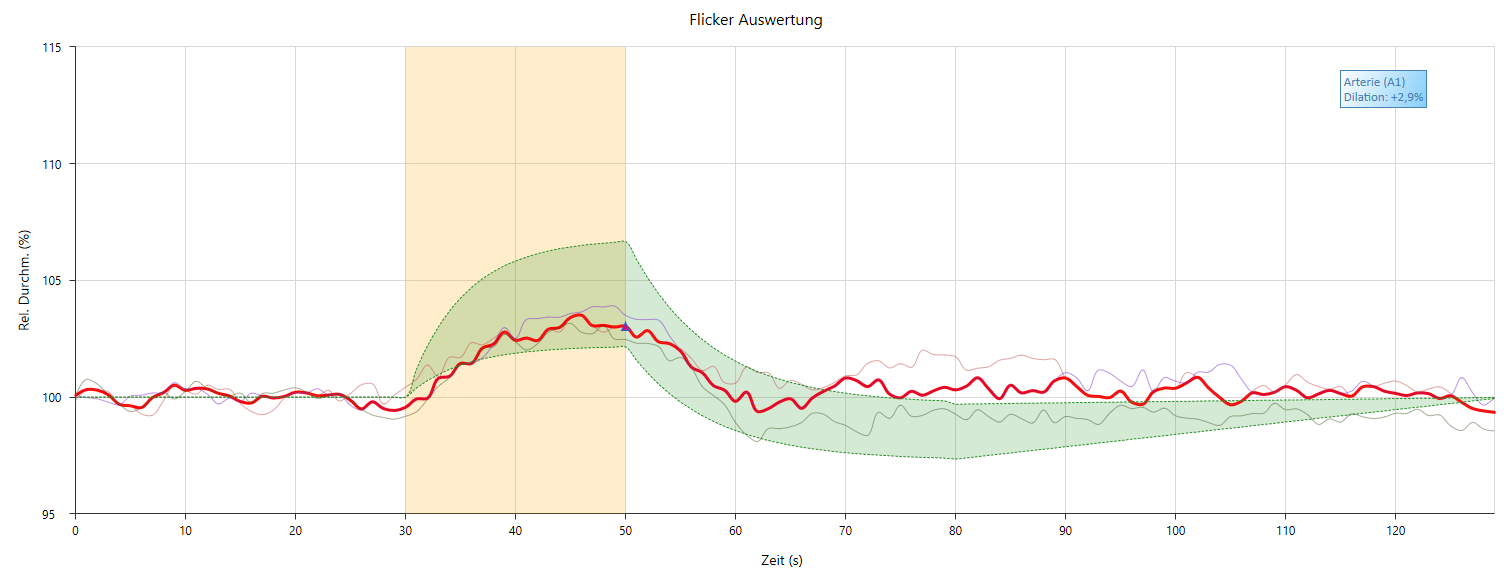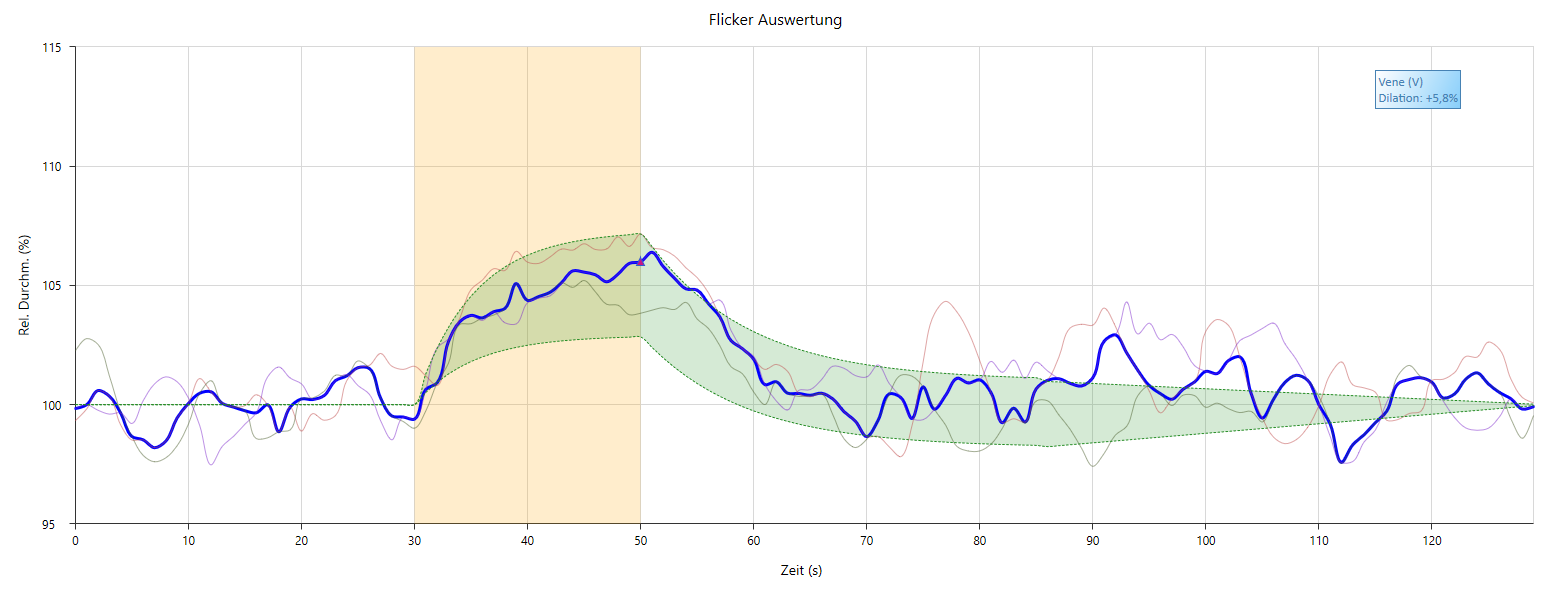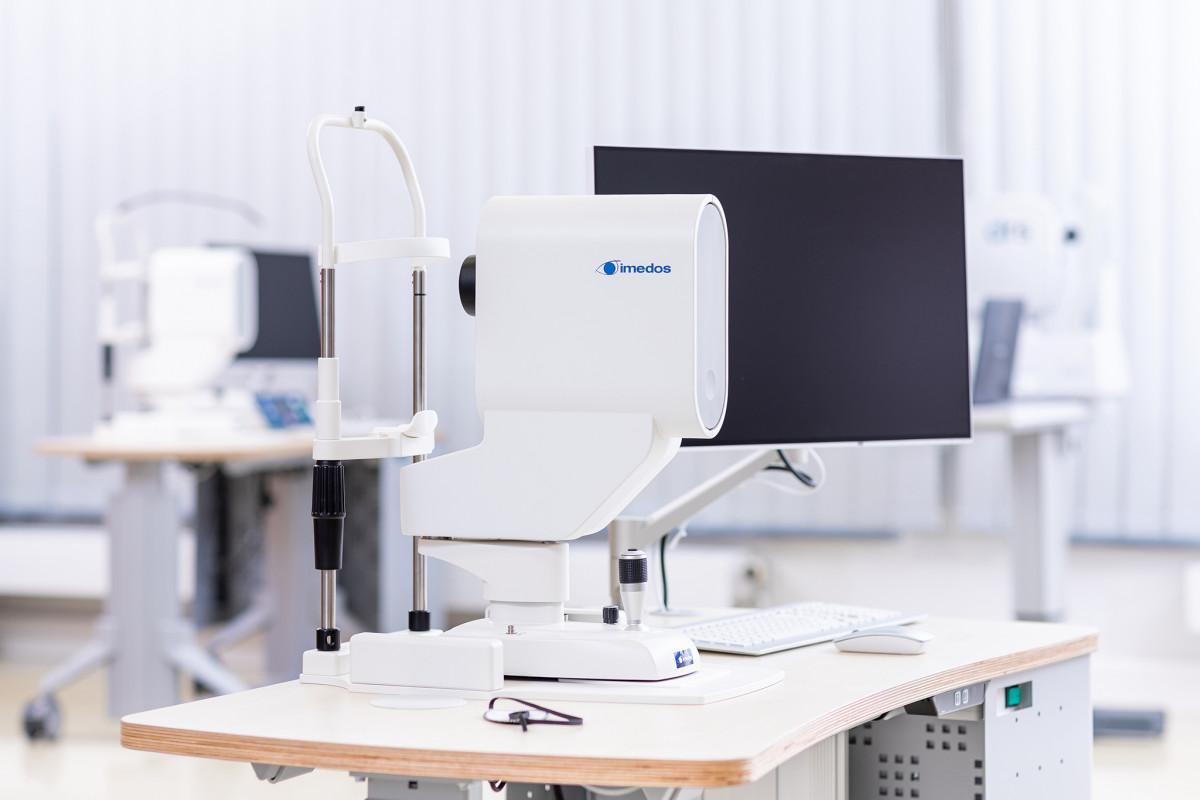Imedos Dynamic Analyzer
System for researching the microcirculation
The Imedos Dynamic Analyzer enables with the method of dynamic vessel analysis The examination of microvascular dysfunction (MVD) and thus offers a unique opportunity for research into the early detection of vascular risk. For this purpose, the microvessels in the retina are recorded and analyzed.
The Imedos Dynamic Analyzer (IDA) is the third device generation of the well-known Dynamic Vessel Analyzer (DVA) and was specially developed for the method of dynamic vessel analysis. As a worldwide unique device system for investigating the function of the smallest vessels and their regulatory mechanisms, it is the only device that enables non-invasive Examination of the endothelium of the microvessels.
Dynamic vascular analysis is used in more than 20 countries for various scientific questions in almost all medical disciplines. This has resulted in more than 800 publications, which form a broad scientific basis for the method and make it the gold standard in the increasingly important field of quantifying endothelial function.
Download:
Product Brochure Dynamic Vascular Analysis – German
Product brochure Dynamic Vascular Analysis – English
Learn more: Method of Dynamic Vessel Analysis
- New design for easier operation
- Painless, non-invasive examination
- High reproducibility of analysis results thanks to high-precision optical and analysis properties
- Patented internal fixation and macular cover for easier fixation and reduction of light exposure
- Standard examination protocol with stimulation of the retina by flicker light
- Measurement resolution of the diameter of the vessels: <1µm
- Time resolution: 40ms
- Field of view 30°
-
Baseline phase: the baseline state of the retinal vessels is recorded for 50 s to subsequently calculate the dilation or constriction of the vessels in percent to baseline.
-
Stimulation or flicker light phase: For functional diagnostics of the MVD, flicker light is used for 20 s during vessel diameter recording (stimulation phase). The green measuring light is interrupted in the alternating image sequence (12.5 Hz) so that a dark image alternates with an illuminated image. The vascular response is recorded continuously and in real time.
-
Post phase: the stimulation phase is followed by a post phase prescribed by the protocol, during which the values of vessel diameters usually return to the baseline level.
-
Repetition: Phases 2 and 3 are repeated twice each.
-
Summary of all phases: The three flicker phases are summarized using signal averaging and displayed graphically as a sum curve in the test result.
The examination protocol of the simple flicker examination is oriented to a strict standardization of the evaluation and is limited to the following three vascular parameters:
- Flicker light induced dilation of the artery (FID art): Arterial dilation maximum of the vascular response to flicker light stimulation in % to baseline.
- Flicker light induced dilation of the vein (FID ven): Venous dilation maximum of the vascular response to flicker light stimulation in % to baseline.
- Flicker light constriction of the artery (FIC art): Arterial constriction maximum of the postphase vascular response to flicker light stimulation in % to baseline.
These vascular parameters characterize the MVD – the function or dysfunction of autoregulation and at the same time the autoregulatory reserve.
Below are sample curves for an arterial and venous flicker response.


- digital video archiving for storage and repeated evaluation of the video files of an examination
- additional measuring points for the simultaneous investigation of up to 10 measuring locations
- modified measurement protocol to adapt the standard protocol to specific medical or medical-experimental issues
- dynamic brightness measurement for the investigation of pulsation phenomena in the capillary bed
The external signal unit is required to connect external devices, such as ECG monitors or blood pressure monitors, to the basic system.
The server solution enables the connection of different workstations and synchronization of the corresponding databases.
TheEvaluation Engine offers versatile possibilities for the individual and grouped evaluation of large amounts of data.
By purchasing the additional “Research Option” module, you have the option of changing the standard protocol or even deactivating the flicker completely. This opens up a wide range of additional options with which the various autoregulation and local control mechanisms can be selectively investigated using specific stimuli.
Some research examples of these include:
- the stimulation by blood pressure elevation to study myogenic autoregulation (Bayliss effect)
- stimulation by inhalation of differently composed respiratory gases, for example 100 percent oxygen, to study the contractility of vascular segments
- the evaluation of pharmacological mechanisms of action
- stimulation with flickering light outside the standard protocol to study neurovascular coupling and vascular endothelial function
- and many more …




